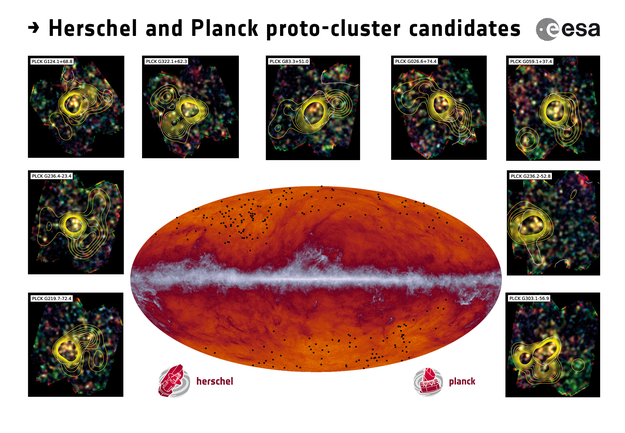 Welcome to Mari Polletta's web site !
Welcome to Mari Polletta's web site !I am a researcher at the Istituto di Astrofisica Spaziale e Fisica Cosmica (IASF) in Milan (Italy). The IASF is part of the italian National Institute for Astrophysics (INAF).
 Welcome to Mari Polletta's web site !
Welcome to Mari Polletta's web site ! My research interests focus on understanding how galaxies form, grow and
die. I use multi-walength data to trace the different components
within galaxies: stars, gas and dust, to characterize their surroundings,
and to reveal the physical mechanisms at play. My approach combines statistical
studies of large samples and more in detail investigations of individual
astrophysical objects.
My research interests focus on understanding how galaxies form, grow and
die. I use multi-walength data to trace the different components
within galaxies: stars, gas and dust, to characterize their surroundings,
and to reveal the physical mechanisms at play. My approach combines statistical
studies of large samples and more in detail investigations of individual
astrophysical objects.
The samples and outstanding objects I have been studying were drawn
from the Planck high-z sample of protocluster candidates (PHz),
the VIMOS Public Extragalactic Redshift Survey (VIPERS), the Spitzer Wide-Area Infrared
Extragalactic Survey (SWIRE), or the
XMM-Newton Large Scale Structure Survey (XMM-LSS). A couple of
exceptional astrophysical objects are shown on the left: the mid-infrared
image and spectral energy distribution (SED) of the most luminous obscured AGN found
in the 50 square degrees covered by SWIRE (aka SW104409), and the
star-forming protocluster G237 discovered by Planck in the COSMOS field.
 I am currently analyzing JWST and ALMA data of actively star-forming
galaxies situated in overdense regions (galaxy clusters and protoclusters)
to determine which processes trigger, regulate and halt their star formation
activity. The sensitivity and spatial resolution of these telescopes
reveal the physical processes that govern stars, dust and molecular gas in
these exceptional objects.
I am currently analyzing JWST and ALMA data of actively star-forming
galaxies situated in overdense regions (galaxy clusters and protoclusters)
to determine which processes trigger, regulate and halt their star formation
activity. The sensitivity and spatial resolution of these telescopes
reveal the physical processes that govern stars, dust and molecular gas in
these exceptional objects.
I am also investigating the sample of Planck galaxy protocluster
candidates with the goal of determining their nature and studying the
properties of their galaxy members. This sample, called Planck high-z sample or
PHz, was selected using the sub-millimeter images provided by the Planck
satellite over the whole sky (see a few examples in the picture on the right).
Most of the PHz protoclusters are found at cosmic noon, when both
star-formation and accretion onto supermassive black holes were at the peak
of their activity level.
To understand the effects of the dense environment on galaxy evolution, I am
also studying the properties of the star-forming members in galaxy clusters
at high-redshift, the direct descendants of the active protocusters revealed
by Planck. To this end I analyze deep multi-wavelength observations over
large areas of the sky to identify the member galaxies and measure
their physical properties, like the star formation rate, the stellar mass,
the contribution from AGN activity, and the amount of cold gas.
Some of the ground and space-based facilities I use to obtain the photometric and spectroscopic data
necessary for my research are shown below.